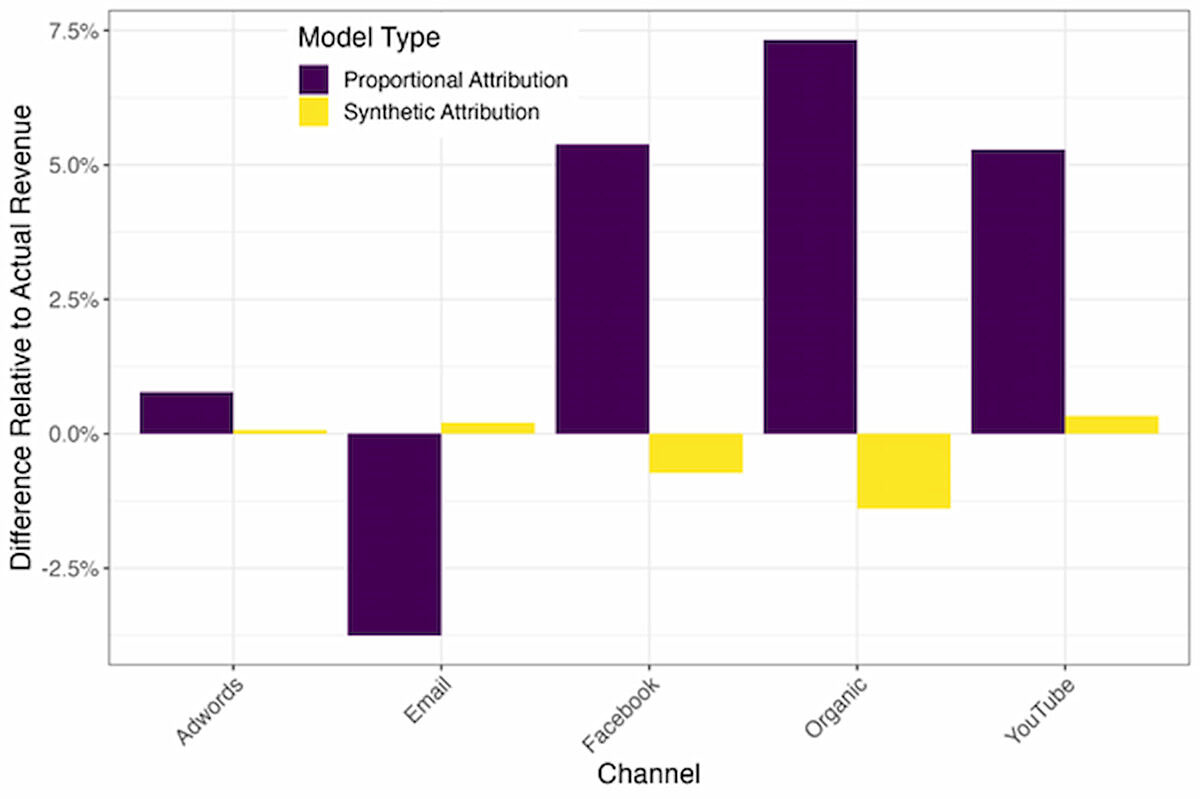Synthetic Attribution for untracked users
Learn more about using synthetic attribution to understand the behaviour of users who do not consent to cookies.

Why you should use Synthetic Attribution
The data value chain experts from Pandata know everything there is to know about Synthetic Attribution and provided us with highly technical input for this Whitepaper that you can use to improve your business’ results:
Attribution models are a vital tool for online marketing, but they rely on cookies, which many users opt-out of. Synthetic attribution is a collection of methods for using the attribution data of users who consent to cookies to understand the behaviour of those who do not. Cookie opt-outs, GDPR rules and consumer backlash against pervasive online tracking are all significant obstacles to creating effective attribution models. The aim of synthetic attribution is to use the assumptions that underpin attribution models to understand the journey of untracked users. It focuses on actual user conversions involving transaction data and uses data from those conversions to attribute revenue to a channel.
How does Synthetic Attribution work?
The value of any attribution model rests on the assumption that there is some kind of relationship between channel and user conversion. Synthetic attribution takes that approach and reverses it. Rather than starting with the marketing channel, it starts with the conversion and works backwards to assign a probability that a given conversion came via a given channel.
The simplest synthetic attribution model is to simply assign all revenue from untracked users to channels in the same proportion as tracked users. This fills in the gaps in any attribution reporting but has the downside of assuming that tracked and untracked users are identical, and that opting in or out of cookies is effectively random. It is much more likely that there are differences in behaviour between these two groups of users, and a synthetic attribution model can leverage the data that is available on untracked users to make inferences about those differences.

The chart above uses data from The Look, Google’s fictional ecommerce company, to show how accurate proportional and synthetic attribution models are at attributing revenue to channels, compared to actual revenue. The smaller the bars, the smaller the deviation from the actual revenue from a given channel. In every case, synthetic attribution models are much more accurate than simple proportional models.
Effective models for synthetic Attribution
Even if a user is untracked, you will have data on the purchases that they make. This transaction data is the best way to identify differences between tracked and untracked users. Different marketing channels attract different types of customers with different messages, and these differences are apparent in the purchase decisions made by customers. There are identifiable and consistent relationships between purchase types and channels, influenced by the messages and target demographics of those particular channels.
Using models such as Gradient Boosted Classification Trees for synthetic attribution is a highly effective approach. These models are highly flexible and can use transaction data (such as order value, order items and coupon codes) from tracked users to attribute revenue to channels for untracked users. Using this data a model can make a prediction about how likely a given transaction is to have come from each channel.
Understanding Synthetic with our Whitepaper
Synthetic attribution models can vary in complexity depending on requirements and data availability. They cannot provide a complete replication of pre-GDPR levels of information but are a valuable component for any modelling ecosystem attempting to allocate resources to channels. By relying on existing data collection they are easy to implement, and respect both the letter and spirit of GDPR by avoiding tracking individual users who do not consent to cookies. Synthetic attribution provides additional and valuable insights on how customers are acquired, and- might become a key component of organizations’ ethical tracking strategies.
For more insights from the data solutions experts at Pandata, get our Whitepaper for free now!





